History of Fairview Cemetery
FAIRVIEW CEMETERY
Established 1866
BOROUGH OF MERCERSBURG, PENNSYLVANIA
(Edition May 23, 2019, By Chaplain (COL) (Ret.) Ron Martin-Minnich)
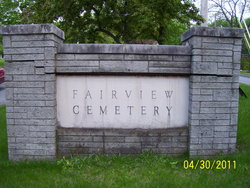
(This sign no longer exists. It used to stand at the entrance on the corner of Rte. 16 and Rte. 75.)
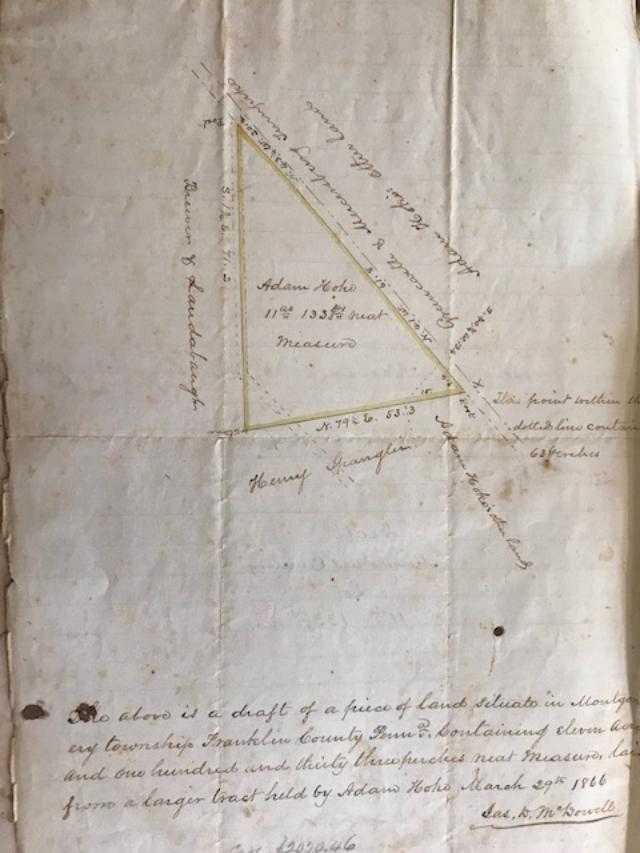
1866 Land Draft of Fairview Cemetery
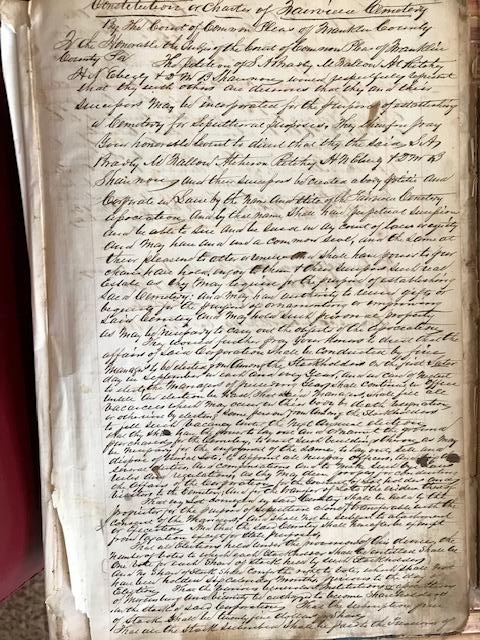
1866 Constitution or Charter of Fairview Cemetery
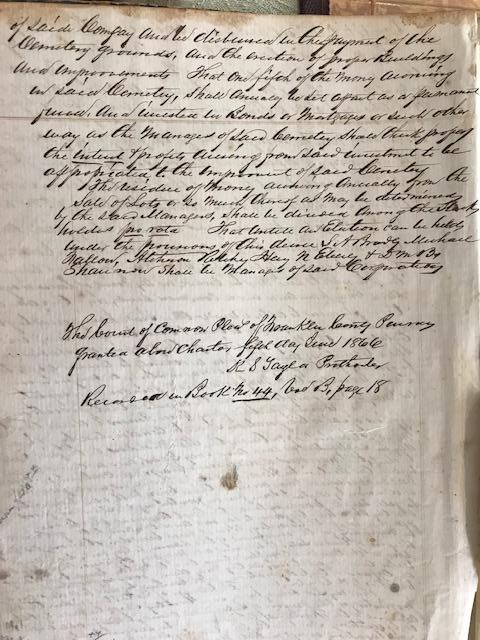
Page 2 of 1866 Constitution or Charter of Fairview Cemetery
Transcription of photo follows:
CONSTITUTION OR CHARTER OF FAIRVIEW CEMETERY
By The Court of Common Pleas of Franklin County To the Honorable, the Judge of the Court of Common Pleas of Franklin County, Pa., The petition of S. A. Bradley, U. Fallon, At. Ritchey, H. N. Eberly, and D.M. B. Shannon would respectfully represent that they with others are desirous that they end their successors may be incorporated for the purpose of establishing a Cemetery for sepultural purposes. They, therefore, pray your Honorable Court to direct that they the said, S. A. Bradley, M. Fallon, Atchison Ritchey, H. N. Eberly and D. M. B. Shannon, and their successors be created a body politic and corporate in Law by the name and stile of the Fairview Cemetery Association, and by that name shall have perpetual succession and be able to sue and be sued in any Court of Law or Equity and may have and use a Common Seal, and the same at their pleasure to alter or renew and shall have power to purchase, have, hold, enjoy to them and their successors such Real Estate as they may require for the purpose of establishing said Cemetery; and may have authority to receive gifts or bequests for the purpose of ornamenting or improving said Cemetery and may hold such
personal property us may be necessary to carry out the objects of the Association.
They would further pray your Honors to direct that the affairs of said
Corporation shall be conducted by five managers to be elected from among the Stockholders on the first Saturday in September in each and every year, and in case of neglect to elect, the Managers of preceding year shall continue in office until an election be had. That said managers shall fill all vacancies which may occur in their body by death, resignation, or otherwise by electing some person from among the Stockholders to fill such vacancy until the next annual election, that they shall have the power to layout and ornament the ground purchased for the Cemetery to erect such buildings thereon as may be necessary for the enjoyment of the same, to
layout, sell and dispose of burial lots, to appoint all necessary officers, and fix their several duties and compensations and to make such By-Laws, rules and regulations as they may deem proper for conducting the affairs of the Corporation for the Government of Lotholders and visitors to the Cemetery; and for the transfer of lots and the evidence thereof.
That every lot conveyed in said Cemetery shall be held by the Proprietor for the purpose of Sepulture alone. Transferable with the consent of the managers, and shall not be subject to attachment or execution. And that the said Cemetery shall hereafter be exempt from taxation except for state purposes.
That all elections held under the provisions of this decree, the number of votes to which each Stockholder shall be entitled shall be one vote for each share of stock held by such Stockholder, and no share of stock shall confer the right to vote which shall not have been holden six calendar months, previous to the day of election. That the various benevolent institutions or associations of Mercersburg and vicinity be authorized to become Shareholders in the stock of said Corporation.
That the subscription price of Stock shall be twenty-five dollars per share.
That all the stock subscriptions shall be paid to the Treasurer of said Company and be disbursed in the payment of the Cemetery grounds, and the erection of proper buildings end improvements. That one-fifth of the money accruing in said Cemetery shall annually be set apart as a permanent fund and invested in Bonds or Mortgages or such other way as the Managers of said Cemetery shall think proper. The interest and profits accruing from said investment to be appropriated to the improvement of
said Cemetery.
The residue of money accruing annually from the sale of lots or so much thereof as may be determined by the said Managers shall be divided among the Stockholders pro rata. That until an Election can be held under the provisions of this decree
S. A. Bradley, Michael Fallon, Atchison Ritchey, H. N. Eberly and D. M. B. Shannon
shall be Managers of said corporation.
The Court of Common Pleas of Franklin County, Penna. granted above Charter fifth day June, 1866.
R. S. Taylor, Prothonoter
Recorded in Book No. 44, Vol. B, Page 18.
Burials Before the Fairview Cemetery
Until the Fairview Cemetery was created, the majority of people were buried in church cemeteries or on family farm property. The most notable are Church Hill Cemetery of The Presbyterian Church of the Upper West Conococheague and the Waddell Cemetery (now known as Spring Grove Cemetery). David Springer was employed to reintern graves. Many people had their loves ones reinterred to Fairview Cemetery.
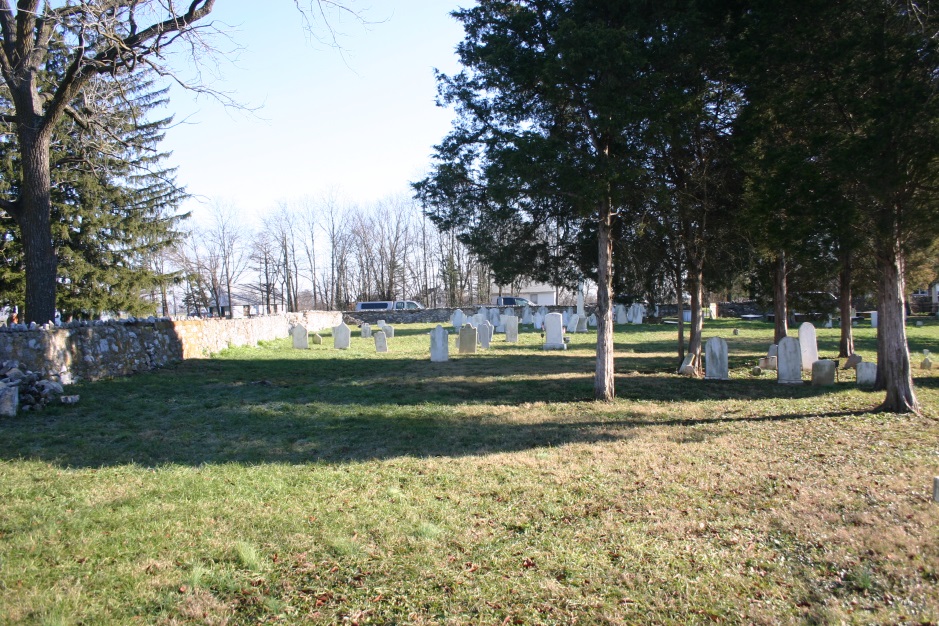
Church Hill Cemetery
The Origins of Fairview Cemetery
Edited by Chaplain (COL) (Ret.) Ronald E. Martin-Minnich,
Member of the Directors of the
Mercersburg Historical Society
Old Account in History of Franklin County
This cemetery was incorporated on June 5, 1866, by S. A. Bradley, M. Fallon, Atchison Ritchey, H.N. Eberly and D.M.B. Shannon. The grounds containing nearly twelve acres, were surveyed by Jas. D. McDowell. Its first directors consisted of D. M. B. Shannon, S. A. Bradley, H. N. Eberly, W. D. McKinstry and J. N. Brewer. Of this number Bradley was president, McKinstry, secretary, and Brewer, treasurer. The present corps embraces J. W. Witherspoon, president; J. N. Brewer, treasurer; W. D. McKinstry, secretary, and D. M. B. Shannon, superintendent.
The original 1866 Minute Book of the Fairview Cemetery Company begins with the previous Constitution or Charter of Fairview Cemetery. It then states on Page 1:
“The Citizens of Mercersburg & vicinity met according to previous appointment
at the Session Room of the Presbyterian Church on Feb. 28, 1866.
Meeting was organized by appointing A.S. Coyle tempy. Chairman & W. D.
McKinstry, Secy.
The Committee appointed at last meeting how Jo. Carson, Recd. W.D.
McKinstry to receive stated proposals for the purchase of ground for a Cemetery
reported as follows
Adam Hoke affected his land for 200$ per acre
C. Loderbaugh “ “ 160 “ “
Hnry. Spangler “ “ 125 “ “
At. Ritchey “ “ 200 “ “
On Motion Resolved that this be a committee of six to examine the different
lands offered and to report at the next meeting the grounds they decide most acceptable.
Committee - S.A. Bradley Jo. Carson
D.M.B. Shannon Jn. Weroleby (?)
Hugh McConell H.N. Eberly
Resolved that a committee of eight be appointed to solicit Subscriptions M. Hayes
Saml Pallsgrove M Fallon Rev Whetstone S.A. Bradley Dr McFaille (?)
Jas D. Scott & A J Conger
Resolved that the meeting now adjourned to meet on Monday evening March 5, 1866
W.D. McKinstry
Secty”
Advertising the New Cemetery
The oldest reference in the Mercersburg Journal to Fairview Cemetery can be found in an advertisement on March 1, 1867, on page 2, column 6:
CEMETERY!
Fairview Cemetery Mercersburg. Contains some Ten or Twelve Acres of Land
Elegantly selected South-East of the town, on a commanding eminence.
W.D. McKinstry, secretary, S.A. Bradley, president
Directors: S.A. Bradley, D.M.B. Shannon,
H.N. Eberly, J.N. Brewer,
W.D. McKinstry.
(Page 9 in 1866 Minute Book)
Duplicate of the Original Subscribers to Subscription paper
February 14th, 1866
“We the subscribers promise to pay the sum assigned to our named for the purchase of Land for a Cemetery say about the acres to be selected and purchased by a committee appointed this evening by the citizens of Mercersburg & vicinity, subject however for the approval at the next meeting of the subscribers,
and Post was”
Shares Subscriber Shares Subscriber
6 W. D. McKinstry @$25 $150.00 2 Dave M. B. Shannon $50.00
8 Atchison Ritchey 200.00 2 Thos McAfee 50.00
6 Adam Hoke 150.00 2 Michael Fallon 50.00
8 Jas O Carson 200.00 2 Tho Creigh 50.00
6 Wm & Joseph Boyd 150.00 2 Massote Hayes 50.00
5 S. A. Bradley 125.00 2 A.S. Coyle 50.00
5 Harry N Eberly 125.00 1 C. Louderbaugh 25.00
5 Samuel Pallsgrove 125.00 1 Patton Harrison 25.00
2 Johnston Rankin 50.00 1 H.B. Kaufman 25.00
2 J Newton Brewer 50.00 2 B. N. Winger 50.00
1 David Springer 25.00 1 Chas G. Lowe 25.00
2 Ms Louisa Hoffeditz 50.00 1 John L. Rhea 25.00
2 Calvin Hoffeditz 50.00 1 Jn Humphreys 25.00
1 George Mowery 25.00 1 Jacob B. Myers, Jr. 25.00
1 Joseph Boferman 25.00 1 Jacob Frick 25.00
1 R H Boyd 25.00 1 James Witherspoon 25.00
1 J Andrew Patterson 25.00 1 A J Unger 25.00
1 Jonas Keefer 25.00 $2200.00
1 Jacob Pensinger 25.00
$1600.00
88 Shares Stock
1 Shares of H N Eberly transfer to M Hays
4 “ “ Joseph Boyd transfer to Mary A Boyd
6 “ “ Adam Hoke Estate transfer to W. D. McKinstry
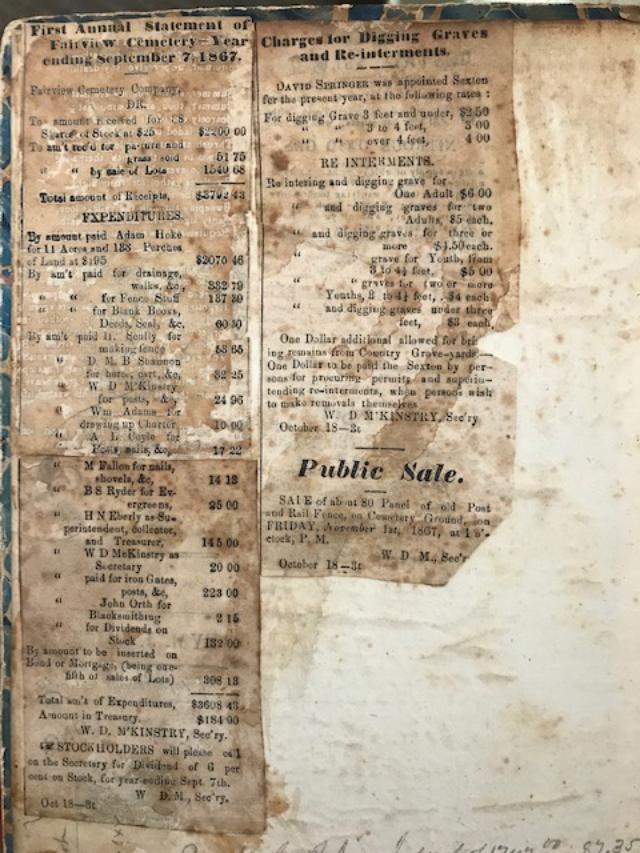
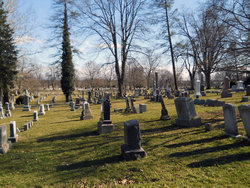
Memorial Day, Part I: When the Yankee Band Played “Dixie”
5/26/2014
Wallace Whitworth
A heartwarming story for Memorial Day, by Archibald Rutledge (1883–1973)
Editor’s note: Archibald Rutledge was an English teacher at Mercersburg from 1904 to 1937, and was named the first Poet Laureate of South Carolina. Rutledge Hall on campus was dedicated in his honor. This article by Rutledge ran in the May 26, 1957, edition of The American Weekly.
The three graves of Confederate soldiers mentioned in the article—J.W. Alban, Mirabo B.L. Locklin, and W.H. Quaintance—are in Fairview Cemetery in Mercersburg, located just across Pennsylvania Route 16 from the Academy campus.
*****
A young man just out of college, I went to teach in a preparatory school for boys in the picturesque village of Mercersburg, Pennsylvania, situated in the lower Cumberland Valley. The year was 1904, and at that time there were still living in Mercersburg many veterans of the Grand Army of the Republic.
This rural outpost had been one of the main routes between Harrisburg and Washington, D.C., and was an important station in the Underground Railroad, which had helped so many slaves escape into the North during the Civil War.
The War Between the States was still fresh in the minds of these people, I thought. Their homes had been subjected to raids by Southern troops, and only a little to the northward the important city of Chambersburg had been burned by the Confederate General McCausland.
I was the son of a Confederate colonel and I was scared, knowing that this was enemy territory and that the wounds of the cruel war were still raw and bleeding. It was not that people were not kind to me, but I felt alien and was certain that I was resented.
Also, I had the perhaps unworthy feeling that some of these same old G.A.R. [Grand Army of the Republic] men had helped to devastate my homeland. Despite the fact that “I was a stranger, and they took me in,” I was not happy and had strong feelings of apprehension.
Yet, the school year passed without any untoward incidents, except the somewhat bewildering graciousness of the old Union soldiers toward me. We used to talk for hours. That winter one of them died, and left me his entire library.
I seemed to make many friends, but I called no one Yank, although everyone called me Johnny Reb. It occurred to me that it might be an affectionate appellation, but I was none too sure.
Throughout the first year one of my closest friends was Dr. James G. Rose, the Presbyterian minister. He was a cousin of President William McKinley. We used to play chess together, and I learned that I could lay some of my personal problems in his lap.
At length the springtime came, and on the eve of Memorial Day, still rather solitary and uncertain of my position in the community, I walked up into the ancient and beautiful cemetery that overlooks the town from a wooded hill. I had been there before to admire the primeval oaks and cedars, under which Indians must have camped before white settlers came to that region in 1750.
As I wandered through this hushed and sacred God’s Acre, I saw that loving and remembering hands had already laid flowers, and had set upright little American flags on all the graves of Federal soldiers. A little apart from those I came upon three Confederate graves. I was touched to see that they, too, had been decorated with flowers, and had little American flags on them.
I thought of the beautiful lines that Francis Miles Finch, a Northerner, wrote when he saw that Federal graves had been remembered in the South by the Daughters of the Confederacy:
No more shall the war-cry sever,
Or the winding rivers be red.
They banish our anger forever
When they laurel the graves of our dead!
Under the sod and the dew,
Waiting the Judgment Day,
Love and tears for the Blue,
Tears and love for the Gray.
The cemetery in which I stood commanded a superb view of the great Cumberland Valley and of the mountains which rose on either side of it. On the eve of this hallowed Memorial Day all was at peace. Yet here great armies had marched, and here brother had slain brother.
Nature had long since done her part to heal the wounds of war, and I was to learn that human nature, though working more slowly, could come at last to beautiful reconciliation: for here before me compassionate hands had impartially covered with flowers the graves of friend and foe.
Kneeling in the twilight at the three Confederate headstones I read the names: J.W. Alban, W.H. Quaintance, and Unknown [later identified as Mirabo B.L. Locklin]. I recognized Alban and Quaintance as Virginia names. I wondered if the families and friends of these three solders of the South knew what became of them.
That night I visited my good friend, Dr. Rose.
“Why, yes,” he said when I told him how touched I had been to see all the soldiers’ graves decorated, “we are never partial when it comes to the men who fought. I guess each side was fighting for a part of our country.”
“The grave marked Unknown is that of a raider who was killed right here in our town square. Alban and Quaintance were, I believe, Virginians. They were both mortally wounded at Gettysburg. On Lee’s retreat from that battlefield, a good many of his wounded men were nursed right here in the school buildings by some of our good townspeople.
“Why,” he added, “Miss Alice Fenwick, I’ve heard, helped to nurse those two men. You must be sure to talk to her. In the face of death,” he added, “people are likely to forget hatred.”
As I had met Miss Alice at one of my school’s social functions, it was not difficult for me to call on her. Then in her late 60s, and looking like a Dresden china doll, she received me graciously.
“Why, yes,” she said, in answer to my questions about the two soldiers she had helped to nurse. “I remember the dear boys vividly—John Alban and Will Quaintance. Each one was terribly wounded and neither one could live. You know, in those days, we had so little medicine of any kind, and nearly all of our doctors were with the armies.
“I did all I could, but it was not enough. John was stoical, but Will did not want to die. Toward the end he was delirious, and kept calling in the most pleading voice for Hallie. I never discovered who she was.”
“And you did this just out of the goodness of your heart?” I asked.
“Why not? They were wounded and lonely and suffering. And,” she went on, “we saw to it that they were given beautiful Christian burials.”
I told her how deeply affected I had been when I saw that the three lonely graves in that Pennsylvania cemetery had not been neglected.
“It is the least we can do,” she said. “I believe your Daughters of the Confederacy, in the Deep South, honor our boys who lie buried far from home. When a war is over,” she added, “it should be over in hearts as well as on battlefields.”
At the time the Richmond [Virginia] Times-Dispatch carried what was called the Confederate Column. It ran news about the old soldiers. For this paper I wrote a little article about what I discovered in southern Pennsylvania.
A few days after it appeared, a letter came to me from Bristol, Virginia. It was signed, “Hallie (Mrs. W.H.) Quaintance.” In part the letter read, “When I was a young bride, my husband disappeared on the Gettysburg campaign. From your article I am sure you have found his grave. I would like so much to come to see where he is lying.”
I was not at all certain about the propriety of having another Southerner come to Mercersburg. I decided to consult my good friend, Dr. Rose. He read with grave interest my letter from Mrs. Quaintance.
“It’s quite wonderful,” he said. “Of course she must come, and don’t worry. We’ll take good care of her.”
Hallie Quaintance was to come by train that reached Mercersburg in the late afternoon. I was to meet her, and I was told that she was to be entertained by Miss Alice Fenwick. The great afternoon found me reassured to some degree, yet still apprehensive.
Since the tiny station was usually a rather desolate and deserted place, I was filled with amazement when I approached it that day. The whole town was there.
There was the G.A.R. band. There were all the old G.A.R. veterans, all in uniform. There was a special carriage for the arriving guest of honor. There were scores of little flower-girls with bouquets. People filled the streets by the station, and overflowed across the tracks. I could feel the air of a loving welcome.
The train rounded the curve, chugging toward the station. At one the G.A.R. band began to play Dixie; and all the old Federal soldiers, their caps covering their hearts, stood at attention.
I remember meeting Mrs. Quaintance, and conducing her to her carriage through a cheering and applauding throng. Then, led by the band, we all marched up to the cemetery. At every step in the these proceedings I could see how carefully Dr. Rose had planned this welcome, as heartfelt as if this community had been a kingdom, and Mrs. Quaintance its reigning queen, returned from a far journey. And both in appearance and in manner that was worthy of this gracious reception.
As we drew near the three Confederate graves, in reverent silence, all the more impressive because unrehearsed, the crowd formed a great circle. Across this to the grave of the one she loved walked Hallie Quaintance. On that sacred mound she laid a wreath of flowers and knelt there briefly. When she rejoined us, her face had upon it a light of loving gratitude and spiritual peace.
For me, this reception of a Confederate soldier’s widow by Union veterans and their friends and families meant, the end of the Civil War. It meant Cease Firing, and the Burial of Guns. It meant I could feel at home in what I had thought was an alien land. Indeed, I no longer wanted to be a mere Southerner. I had learned how much greater it is to be an American.
*****
Rutledge died in 1973 (at age 89) at his homestead, Hampton Plantation, in McClellanville, S.C. Today, Hampton Plantation is a South Carolina State Historic Site and a National Historic Landmark. Rutledge was the father of three Mercersburg alumni (all deceased): Archibald H. Rutledge Jr. ’26, Henry M. Rutledge ’27, and Irvine H. Rutledge ’29. He was also the great-grandfather of Macon Rutledge ’98.
Rutledge is also the namesake of Mercersburg’s Archibald Rutledge Chair, which is currently held by faculty member Frank Rutherford ’70.
(Photos by Jillian Kesner)
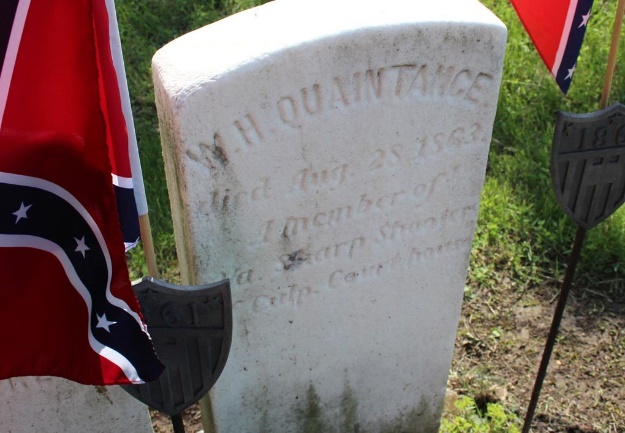
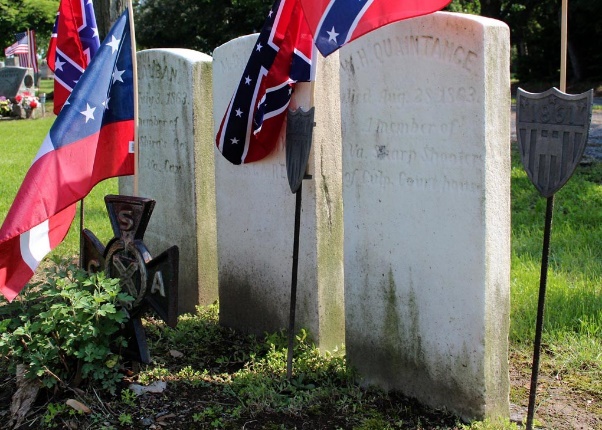
Members of the Mercersburg Historical Society have updated and corrected the Rutledge account, based on research of local primary accounts of The First United Methodist Church of Mercersburg and information based on the book Mercy at Mercersburg: Forgiveness, Compassion, Redemption by Carl Moran, 2010.
First, although its sounds romantic, there are no other accounts that “Dixie” was played by a G.A.R. band. Still, this account is included in research by Carl Moran.
Second, the name of Quaintance is Joseph William Quaintance, not W. H. Quaintance. There is extensive information about the care of Joseph William Quaintance in the home of the Leidys, members of the Methodist Episcopal Church in Mercersburg, now First United Methodist Church.
The Leidy family was touched by Marse’s (Joseph Quaintance) condition and
the circumstances at the church and they made the decision to take him into their
home. They discussed the situation with the Union officer overseeing the prisoners
at the church and he acceded to their request that Marse be moved to their home
about two blocks away om Fayette Street. (Mercy at Mercersburg, p. 45)
Joseph William Quaintance joined the Methodist Church out of his gratitude for their care and compassion.
Friday, July 3, 1863 by Joan C. McCulloh, Mercersburg Historical Society article
Although local people in the weeks before the Battle of Gettysburg experienced fear because of presence of Confederates in this area, they could not have anticipated the events that occurred in Mercersburg on the third day of the battle, July 3. On that morning a union prayer service was held in the Methodist Church. The minister, the Reverend John Buckley, wrote: “About this period of excitement at the instance of James O. Carson a union prayer-meeting was inaugurated which was composed of the various churches of the town and was held in our house {church}. The exercises consisted of reading the scriptures and prayers.” Reverend Buckley added: “These meetings were well attended and I think did good.” The Mercersburg Journal reported on July 17 the following about the service: “At eight A.M. a prayer meeting was held in the M. E. Church with tolerable attendance, and a solemn session was enjoyed by those present.” The text was “Some trust in chariots, and some in horses, but we will remember the name of the Lord our God.” (Psalm 20:7) A union worship service was held on the next day also. This community in the month of June had suffered many raids. Reverend Buckley wrote: “…in the month of June when the Rebel army made an incursion into this valley a portion of which under Genl Imboden and McNeils {sic} guerrillas menaced this town and adjacent neighborhood doing much harm during a period of three weeks in the way of plundering….it too was equally destructive of religion.” These raids understandably terrified the local African American residents as the Confederates had no compunction about taking free black people as well as fugitive slaves.
Later on July 3 Constable George Wolfe, who had ridden out of town and had seen some Confederate soldiers, returned to town with the Confederates in pursuit. He had little time to warn the people as three Confederate soldiers, members of the 12th Virginia cavalry, appeared in the Diamond. At that time two Union soldiers, of whom local people had earlier been wary as they remembered the blue-coated Confederates of September 1862, fired their guns upon the Confederates. A bullet killed Private James Alban on his horse on the Diamond between Colonel Murphy’s Hotel, now the Mansion House, and the site of the present M & T Bank. That same bullet went into the horse of Lieutenant William Cane. As his horse slumped, Cane ran down the alley next to James O. Carson’s, the alley adjacent to what is now Flannery’s. When local people, bent upon his destruction, ran up the alley, cooler heads prevailed, and they captured him. The third Confederate escaped on horseback. Although an old gentleman, a veteran of the War of 1812, fired his gun at him, the soldier, followed by Constable Wolfe, who came back with only the cap of the fleeing Confederate, rode fast and was able to reach safety in Confederate lines at Cunningham‘s Crossroads, now called Cearfoss. Local citizens buried Alban, who according to a certificate in his pocket was soon to be discharged, in a brickyard on West Seminary Street but later moved his body to the Presbyterian cemetery.
In 1889 the bodies of the three Confederate soldiers who had died in Mercersburg were re-interred in Fairview Cemetery at the behest of the James P. McCullough Post of the Grand Army of the Republic, which also had the three tombstones installed. The body of Joseph W. Quaintance was moved from the Methodist cemetery, and the body of M. B. Locklin, a Confederate prisoner who died in Mercersburg on July 9, 1863, was interred there also.
The Mercersburg War Memorial Rostrum
“Dedicated to the Men and Women
Who Served Their Country in Time of War?
By The People of Mercersburg, May 30, 1930”

Over the years, this Rostrum has come to represent our community’s honor to all who have served our country in any of the armed forces but particularly to those who gave their lives during wartime. Immediately after the end of World War One, November 11, 1918, communities across the United States struggled to find fitting memorials for those who had served and to those who gave the supreme sacrifice. Mercersburg was no different.
In August, 1919, as the last of the occupation troops were returning from Europe, the Reverend L.E. Wilson of the First Methodist Church in a front page article in the Mercersburg Journal argued that a suitable memorial should be a community center for the citizens, both town and country, to use as a focus for providing service and civic instruction. However, by January, 1920, the Journal also cited a local writer who called upon the community to show more support for the few remaining Mercersburg area Civil War veterans of the local Post of the Grand Army of the Republic (G.A.R.). and likewise urged the many young veterans of the most recent war to form an American Legion Post so they, too, might develop and pass on the civic virtues as the G,A,R, had. “Your community calls even as your country called. We know you will respond just as nobly.”
Seven months later, sixteen area WWI vets did respond by applying for and receiving a charter for Mercersburg Harry Lackhove Post 517 of the American Legion. Lackhove had been killed in the Meuse- Argonne offensive only a month before the war ended and his was the second WWI veteran’s body to be interred in Fairview Cemetery. For the next few years Post 517 took on more and more of the responsibility and organization for the Memorial Day services as more veterans began to settle back into normal lives and took on more civic responsibilities. In 1924 over twenty ladies applied for a charter as the auxiliary of Post 517 in order to assist the Post in furthering the ideal of peacetime service to America. Over the years four of the unit’s members would, themselves, become Gold Star mothers who lost sons in war.
Toward the end of the 1920s, the commemoration of Memorial Day (Declaration Day) began to become a more formal and organized occasion with a marching band, uniformed Legionnaires and other veterans, all town school children, invited speakers and local dignitaries and a truck load of flowers, all parading the length of town and into the cemetery. After placing of flowers on the graves of veterans, a formal program of speeches and patriotic music was conducted in the open area near to the present Rostrum. The services concluded with the playing of taps.
In early 1930 still wishing to bring a more formal solemnity to the occasion, some local Legion members and community leaders began to plan and to raise funds for a special War Memorial Rostrum from which to conduct services and give speeches.
The committee called upon L. C. Bareham, a WWI veteran on the Mercersburg Academy faculty who taught mechanical drawing and who had visited many other war memorials, to design the Memorial Rostrum. It was to be constructed of native limestone from the quarry located behind the local public school and donated by Post 517. The steps, capstones and benches were to be Indiana limestone with the central pillar holding the dedication plague to be capped with Indiana limestone surmounted by a bronze American eagle.
The cost was estimated to be about $2,300 (with inflation figured in, equal to $28,073 present day). Completion was planned for Memorial Day, May 30th, 1930. However, with only a week to the May 23rd Journal in a front-page story, pointed out that the Memorial committee still needed an additional $300 so the total cost would not fall upon its members who had already given much in time and talent. To further its appeal the Journal also printed another front-page article describing how all the Mercersburg school children of every class had made some contribution, noting in particular that the senior class had donated from its special treasury they had been saving since their ninth-grade year for their class trip to Washington. Additional funds were forth coming. Such was the patriotic spirit of the times.
The Memorial Rostrum stood pristine for dedication on May 30th with great anticipation by people and veterans from communities around the area. Bleachers for the elementary school children who would sing America the Beautiful were set. The noted Morris Frock Drum and Bugle Corps from Hagerstown would march and perform at the services. The Mercersburg Band would play various selections. A double quartette from the high school would sing God of our Fathers. Dr. Boyd Edwards Headmaster of the Academy would deliver the main address. as other dignitaries would give speeches of dedication and acceptance by the borough of the Rostrum. Others would speak of the meaning of the day and “The Service of Mercersburg’s Sons in Time of War.” Dr. Archibald Rutledge, noted author and poet, wrote a special poem for the service, To the Heroes in Fairview. Then America was sung by all, a Benediction given, then silence broken by echoing Taps.
So the Rostrum came into being. For 87 years and as many services it has stood as the place for all to gather and pay respects and honor to the Mercersburg area veterans..
In 1930 no one on that day could foresee that the crash of the stock market seven months before was sending our nation slowly into a Great Depression that for the next ten years would test the character of our country nor foresee that another great World War would call our sons and daughters once again to service and sacrifice. Nonetheless, through those trying years every Memorial Day was celebrated here.
After WWII, the plagues on the end pillars listing the men who died in those two great wars were added by the American Legion.
Today through volunteer work, special funding by American Legion Post 517, and community donations, the Memorial Rostrum, after pressure cleaning and removal of the badly deteriorated mortar joints, has been completely repointed by professional stone masons. This was undertaken as a project of the American Legion to commemorate the 100th anniversary of America’s entry into WWI in 1917 and as a means of providing needed maintenance to original memorials of the era.
May the Mercersburg War Memorial Rostrum now stand another 87 years, the symbol of our continuing honor to our veterans whose service and sacrifice have kept us free from tyranny and oppression.
Of the 1,833 Franklin county veterans who served in WWI, 88 died during the war including 6 nurses. Nearly 50% were non-combat deaths mainly from the “Spanish” flu.
From Mercersburg and surrounding townships, 207 men and one nurse served.
Eight men from Mercersburg perished in the war, all between Sept. 11 1918, and Nov. 4 1918, the last within a week of the Armistice Nov. 11.
CHARLES RUSSELL JONES Sept 11, 1918, Navy, Port Arthur Texas.
(died saving others from a burning building.)
ALVIN G. SHEETS Sept. 17, 1918, 53rd replacement draft infantry.
(accident onboard ship, broken arm, got bronchial pneumonia)
LEWIS HIMES, KIA Sept. 29, 1918, 368th infantry, 93rd “colored” Div.
(Mercersburg African-American Legion Post 830 named for him)
FRANK POFFENBERGER, KIA Oct. 3,1918, Lieut., 111th infantry 28th Div. (Mercersburg Academy 1909, 6 years in National Guard)
HARRY L. LACKHOVE, KIA Oct. 13, 1918, 314th infantry 79th Div.
(American Legion Post 517 named for him)
WALTER SEVILLE, KIA Oct. 15, 1918, 126th infantry 32nd Div.
JAMES C. ROCKWELL, KIA Oct. 24, 1918, 16th infantry 1st Div.
LESIE S. ZEGER, KIA Nov. 4, 1918. 316th infantry 79th Div.
Summary of Events of Fairview Cemetery Association from the past
Minutes of the Association
(1866 – 1997)
1st Minute Book (1866-1910)
2nd Set of Loose Page Minutes (1910-1931)
3rd Minute Book (1932-1997)
April 23, 1866 – The stockholders met to legally charter the cemetery and employed William Adams, attorney, for this purpose.
July 24, 1866 – The stockholders met to organize and elect W.D. McKinstry, President, D.M.B. Shannon, Secretary and Adam Hoke, Treasurer.
September 10, 1866 – The stockholders met to Nominate S.A. Bradley, At. Ritchy, M. Fallon, J.W. Brewer, H.N. Eberly, Saml. Pallsgrosse, D.M.B. Shannon, W.D. McKinstry and A.S. Coyle as directors. The election resulted with D.M.B. Shannon, S.A. Bradley, Hry. W. Eberly, J.W. Brewer and W.D. McKinstry as elected directors.
November 1, 1906 – It was noted with a Newspaper clipping that, “J.N. Brewer, who has held the office of Secretary and Treasurer of the Fairview Cemetery Association at Mercersburg for 40 years, has resigned and turned the books to his successor, H.H. Spangler, Esquire.
1910-1919 – N.D. Boyd, President, H.H. Spangler, Treasurer, George A. Stauffer, Supertintendent and S. M. Rhea, Secretary.
September 17, 1919 – H.B. Hege begins his years of service as Secretary. He was paid $15 a year for this office. He served continuously until 1931.
December 10, 1931 – C.A. Brown, President, H.H. Spangler, Treasurer, H.B. Hege, Secretary, H.B. Krebs, Vice President and George A. Stauffer, Superintendent.
December 15, 1932 – H.B. Hege and H. B. Krebs, switched office of Secretary and Superintendent. Their roles did not change for the next 11 years. H.B. Hege died May 6, 1943.
January 18, 1943 – D. J. Lininger elected as Temporary Chairman for Annual Stockholders Meeting.
January 17, 1944 – J.M. Drum, President, J.M. Johnston, Vice President, Harry L. Wolfe, Treasurer, Harry B. Krebs, Secretary and Harry Wolfe, Temporary Superintendent.
January 19, 1948 – F. Martin Lininger first appears in minutes in roll of auditor with D. Alvin Statler.
January 21, 1952 – Mr. L.L. Steiger first appears as Treasurer.
December 28, 1953 – Harry B. Krebs, resigns as Secretary.
January 18, 1954 – F. Martin Lininger begins to hold the office of Secretary.
January 21, 1952 – Rules of Regulations of Fairview Cemetery Association were unanimously adopted.
February 21, 1959 – First discussion of Pennsylvania State Roads changes on Rte. 16 that affected the cemetery property boundaries.
May 4, 1960 – Decisions approved on the resurfacing and changes to cemetery grounds caused by changes to Rte. 16.
June 2, 1960 – Tool shed plans approved.
January 24, 1961 – Pennsylvania filing of Corporation Income Tax return begins.
June 15, 1964 – Approval to petition annexation to the Mercersburg Town Council for cemetery into Borough of Mercersburg from Montgomery Township.
September 2, 1964 – Fairview Cemetery Association By-laws were updated.
September 7, 1968 – F. Martin Lininger, appointed Superintendent of Grounds.
September 5, 1970 – Grace Steiger elected Secretary-Treasurer, as F. Martin Lininger is elected President and Assistant Treasurer.
September 4, 1976 – Julia B. Grove is elected Secretary after the resignation of Grace F. Steiger in June 1976.
October 1, 1977 – It was approved to move the cemetery records to F. Martin Lininger’s business office.
September 7, 1985 – Coverage against any judgments claims or demands was approved to protect officers, directors, managers and employees of the corporation.
September 1, 1990 – Alan Fries first appears as elected Assistant Treasurer.
April 25, 1996 – “It was pointed out that the cemetery has grown in size and now comprises 17 acres of ground.”
Back to Mercersburg Area